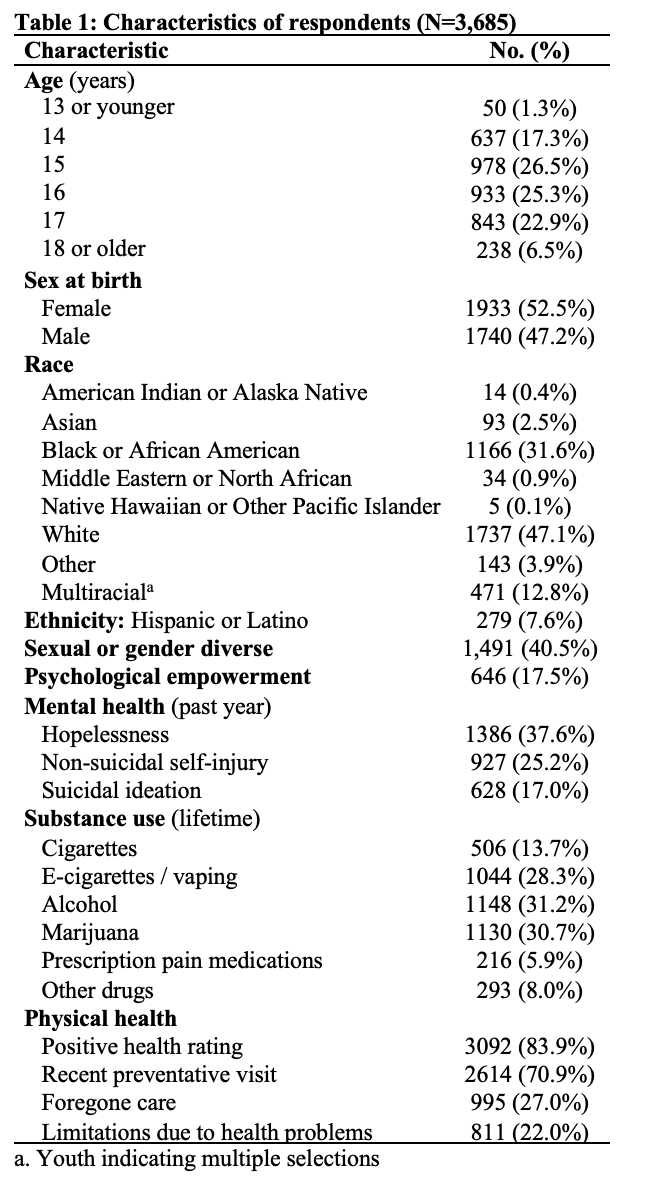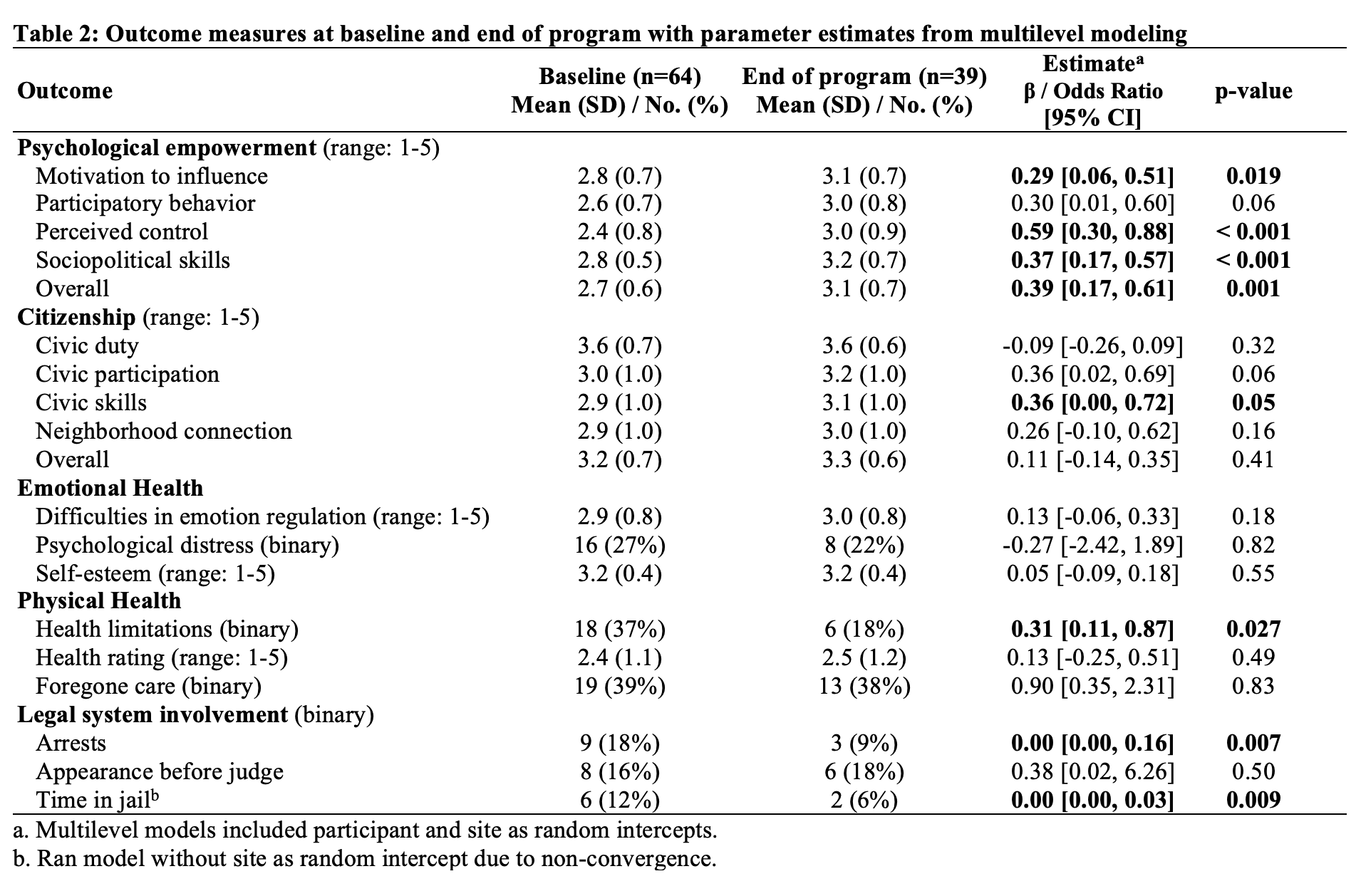Adolescent Medicine 5: Potpourri
Session: Adolescent Medicine 5: Potpourri
146 - Psychological empowerment: a cross-cutting protective factor for adolescent health
Monday, April 28, 2025
7:00am - 9:15am HST
Publication Number: 146.6171
- NS
Nicholas Szoko, MD, PhD (he/him/his)
Assistant Professor of Pediatrics
Washington University in St. Louis School of Medicine
Saint Louis, Missouri, United States
Presenting Author(s)
Background: Psychological empowerment (PE) supports positive social and behavioral outcomes in adolescence; however, research examining PE in the context of health remains limited.
Objective: We sought to describe relationships between PE and various aspects of adolescents’ mental and physical health.
Design/Methods: We utilized data from school-based surveys administered to 4,181 students across 17 high schools in Pittsburgh, PA in 2023. We measured PE with two items adapted from a validated instrument. Health-related measures were derived from the national Youth Risk Behavior Surveillance System and included past-year depressive symptoms, lifetime substance use, and measures of overall health and receipt of healthcare. Demographic characteristics were summarized with descriptive statistics. We used generalized linear mixed models to examine associations between PE and each health-related measure. Results are presented as adjusted odds ratios (aORs) with 95% confidence intervals (95% CI).
Results: Among 3,685 youth in the analytic sample, the majority (n=3,391; 92.0%) were 14 to 17 years old. Most were White (n=1,737; 47.1%) or Black or African American (n=1,166; 31.6%). Many identified as gender/sexual diverse (n=1,491; 40.5%). Less than one fifth of youth (n=646; 17.5%) had high PE. Over a third (n=1,386; 37.6%) endorsed past-year hopelessness. Lifetime use of e-cigarettes (n=1,044; 28.3%), alcohol (n=1,148; 31.2%), and marijuana (n=1,130; 30.7%) was common. Most youth reported positive health rating (n=3,092; 83.9%) and recent preventative care (n=2,614; 70.9%) (Table 1). Youth with high PE were less likely to report hopelessness (aOR: 0.65 [95% CI: 0.53-0.79], non-suicidal self-injury (aOR: 0.59 [95% CI: 0.46-0.75]), and suicidal ideation (aOR: 0.58 [95% CI: 0.44-0.77]). PE was also inversely associated with lifetime use of e-cigarettes (aOR: 0.69 [95% CI: 0.56-0.85]), alcohol (aOR: 0.76 [95% CI: 0.62-0.93]), and marijuana (aOR: 0.75 [95% CI: 0.61-0.93]). PE was additionally linked to positive health rating (aOR: 1.65 [95% CI: 1.24-2.19]), receipt of preventative care (aOR: 1.29 [95% CI: 1.05-1.59]), and decreased foregone care (aOR: 0.76 [95% CI: 0.61-0.94]). There were no significant relationships between PE and other measured assessed (Table 2).
Conclusion(s): Among an urban, school-based sample of adolescents, we demonstrate significant associations between PE and various health-related measures. Findings underscore the importance of PE as a modifiable protective factor in adolescence, particularly as part of youth-facing interventions focused on positive youth development.
Table 1: Characteristics of respondents (N=3,685)

Table 2: Associations between psychological empowerment and health-related measures

Table 1: Characteristics of respondents (N=3,685)

Table 2: Associations between psychological empowerment and health-related measures


